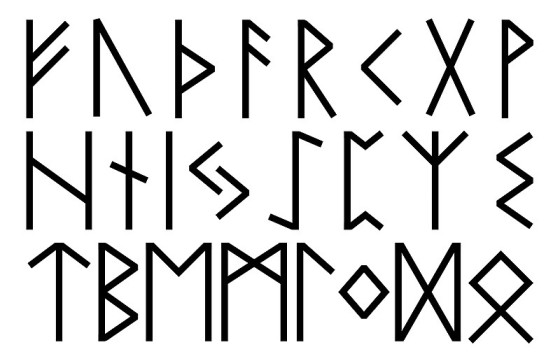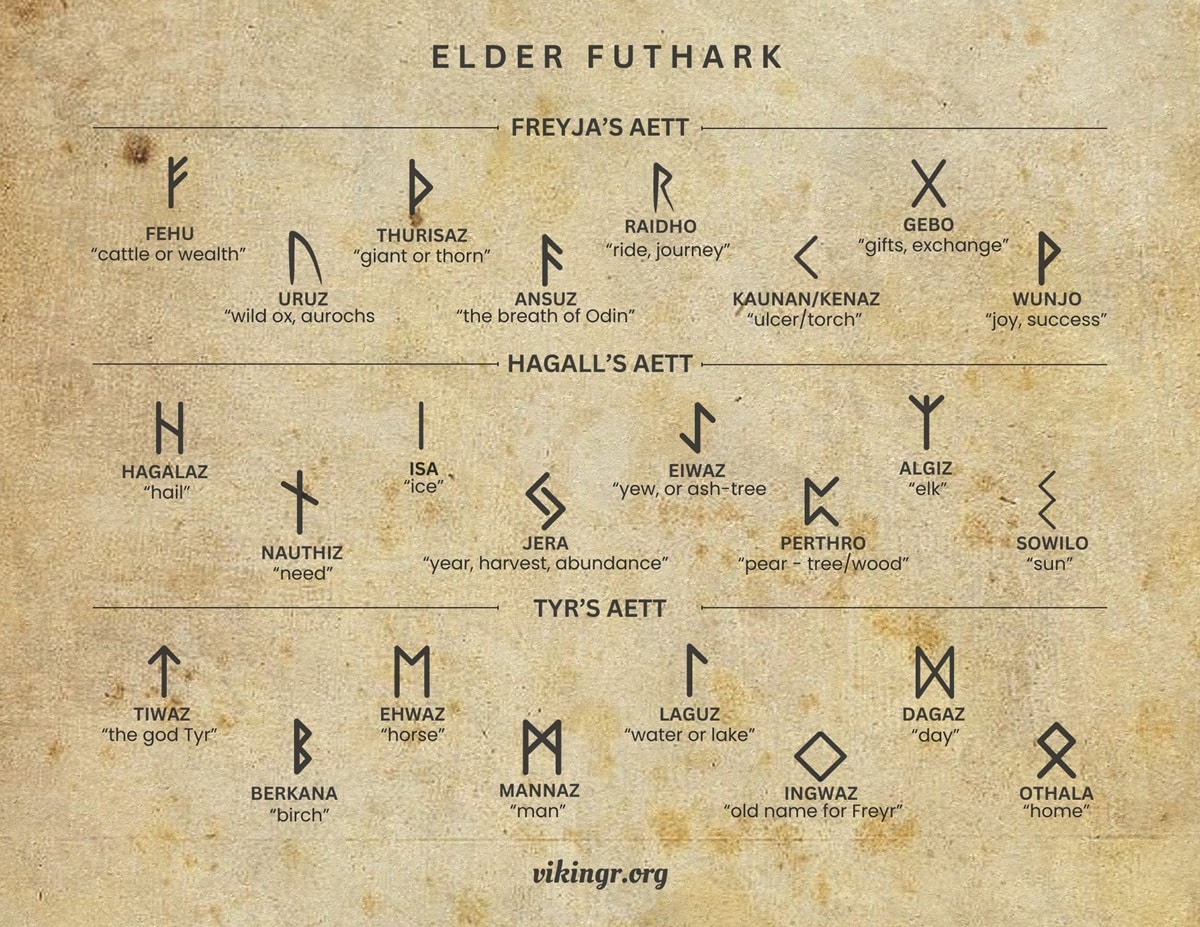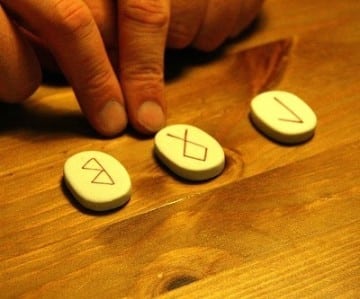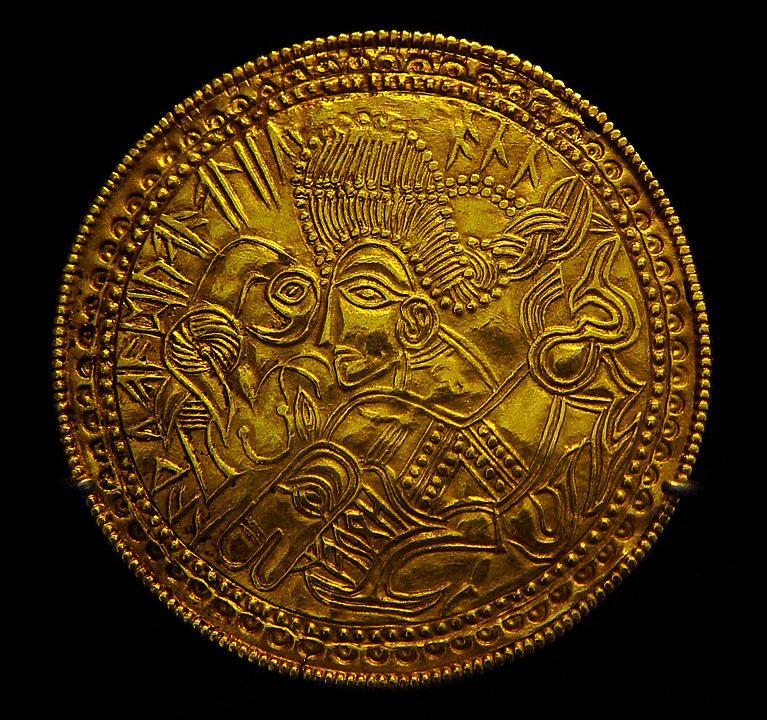The Elder Futhark and the Younger Futhark are two ancient runic writing systems used by the Old Norse people in Northern Europe. Both systems consist of a series of symbols known as runes, which were used to represent sounds, words, and ideas. The Elder Futhark is the oldest of the two systems, and it was used in the early medieval period, from around the 2nd to around the 8th century AD. The Younger Futhark is a later development of the Elder Futhark, and it was used from around the 8th to the 12th centuries AD.
Origins of the Elder Futhark
The origins of the Elder Futhark are somewhat mysterious, but it is believed to have evolved from earlier runic systems used by the ancient Germans and Celts. The Elder Futhark, arranged into three groups of eight called aettir, includes 24 runes. Each aett links to a specific deity or concept, often influencing the meanings of the runes within its group.

The Anglo-Saxons in England used one such system, the Anglo-Saxon Futhorc, from around the 5th to 11th centuries. The Anglo-Saxon Futhorc, with its 33 letters, primarily served to write Old English.
The Gothic runes represent another runic system. The Goths, an East Germanic people, used this runic alphabet, which bears a lot of similarities with the Elder Futhark. Scholars believe that it derived from the Greek alphabet, and it includes 27 letters.
After the fall of the Western Roman Empire, the Goths established their own kingdom in what is now modern-day Italy. The kingdom and other parts of Europe where the Goths had established their presence used the Gothic runes.
The Gothic runes fell out of use after the 6th century, as the Goths adopted the Latin alphabet. The Latin alphabet eventually replaced all of the older runic alphabets in Europe, although some of the runic traditions and symbols have been preserved in modern times.
As these writing systems developed it is worth mentioning that there was considerable overlap both in time and area. One system didn’t supplant another overnight, but it was a process spanning centuries.
the Elder Futhark runes in use
From the 2nd to the 8th centuries AD, the early medieval period saw widespread use of the Elder Futhark. The Old Norse people, residing in present-day Denmark, Sweden, Norway, and parts of Germany and the Netherlands, used it extensively. Other Germanic peoples, including the Angles, Saxons, and Jutes, also utilized the Elder Futhark. These groups migrated to Britain in the 5th and 6th centuries AD, carrying their versions of the system with them.
The cultures and societies that utilized the Elder Futhark found various purposes for it. People used divination as one application; each rune had a specific meaning, which allowed for interpretation in the context of particular questions or scenarios.
In magical practices, people also used runes, believing in their power to shape events and manifest desired outcomes. The Elder Futhark played a central role in the culture and society of the Old Norse people, and continues to be a source of fascination and inspiration to this day.
Structure and meaning of runes in the Elder Futhark
The 24 runes of the Elder Futhark are divided into three groups called “aettir,” or “families.” Each aettir contains eight runes, and each of the runes within an aettir is believed to be connected in some way, either through their meanings or through their connections to Norse mythology.

Download Elder Futhark PDF
The runes of the Elder Futhark had a wide range of meanings, and each one represented a particular concept or idea. Some of the runes were associated with specific deities or natural forces, such as the sun, water, and fire. Others represented more abstract concepts such as wisdom, protection, and justice.
The meanings of the runes were often related to the aett in which they were found, and the associations between the runes and the deities or concepts they represented could vary from one culture to another. Despite these variations, the runes of The Elder Futhark remain a powerful symbol of the ancient Norse culture and the enduring influence of these ancient signs.
The following is a brief overview of each of the aettir and the runes that they contain.
Freyja’s Aett
The first aett is called “Freyjas (and/or Freyrs’) Aett,” and it is associated with the goddess Freyja (or Freyr, Freyjas’ brother).
This aett contains the following runes:

Fehu (F) – “cattle or wealth”. It is associated with prosperity, abundance, and the natural cycles of life.

Uruz (U) – “Wild ox, Aurochs”. It is associated with primal power, physical strength, and the forces of nature.

Thurisaz (Th) – “Giant, or thorn”. It is associated with danger, protective powers, and the courage to face challenges.

Ansuz (A) – “God, thought to mean the breath of Odin”. It is associated with wisdom and the power of the spoken word.

Raidho (R) – “ride, journey”. It is associated with movement, change, and the journey of life.

Kaunan/Kenaz (K) – “ulcer/torch”. It is associated with fertility, creativity, and the power of procreation.

Gebo (G) – “gifts, exchange”. It is associated with generosity, partnerships, and the exchange of energy and resources.

Wunjo (W) – “joy, success” Associated with joy, success, and the attainment of personal goals.
This aett is associated with material abundance, fertility, as well as the natural world. The runes in this aett are believed to represent the forces of creation and the cycle of life.
Hagall’s Aett
The second aett is called “Hagall’s Aett,” and it is associated with the Aesir god Heimdall, who was also known as Hagal.
This aett contains the following runes:

Hagalaz (H) – “hail” Associated with change, transformation, and the forces of chaos.

Nauthiz (N) – “need”. Associated with need, constraint, and the challenges that we must overcome in life.

Isa (I) – “ice” Associated with stillness, isolation, and the need for introspection and self-reflection.

Jera (J) – “year, harvest, abundance”. Associated with abundance, prosperity, and the cycle of the seasons.

Eiwaz (Ei) – “yew, or ash-tree”. It is associated with healing, strength, and the power of transformation.

Perthro (P) – “pear-tree/wood”. Both its meaning and association is unclear. One possibility is that it translates to pear-trea/wood and the association would be with games or fun.

Algiz (Z) – “elk” Associated with protection, defense, and the guidance of the higher powers.

Sowilo (S) – “sun” It is associated with success, victory, and the attainment of spiritual enlightenment.
This aett embodies transformation, change, and the passage of time. The belief is that the runes in this aett symbolize the forces of destruction and renewal.
Tyr’s Aett
People call the third and last aett “Tyr’s Aett,” associating it with the Aesir god Tyr.
This aett contains the following runes:

Tiwaz (T) – “Tiwaz / the god Tyr”. As an extension of the god Tyr, it is associated with justice, honor, and the qualities of a strong leader.

Berkana (B) – “birch”. It is associated with growth, fertility, and the cycles of life and death.

Ehwaz (E) – “horse”: Associated with partnership, loyalty, and the bonds of trust and commitment.

Mannaz (M) – “man”. It is associated with humanity, society, and the relationships that we have with others.

Laguz (L) – “water or lake”. It is associated with flow, emotion, and the power of the unconscious mind.

Ingwaz (Ing) – “Ingwaz, old name for Freyr”. It is associated with completion, fulfillment, and the attainment of personal goals.

Dagaz (D) – “day”. It is associated with transformation, enlightenment, and the attainment of balance and harmony.

Othala (O) – “home”. It is associated with inheritance, property, and the transmission of cultural and spiritual values from one generation to the next.
This aett symbolizes social order, justice, and the structure of society. People believe that the runes in this aett symbolize the forces of order and stability.
The symbolism of the aettir
People believe that the aettir contains the energies and forces of the cosmos within each of them. They also think that each aettir connects to a specific god or goddess. Each aett and the runes within it present complex and multifaceted meanings and symbols that allow understanding on many different levels.
Some people believe that the aettir and the runes within them represent the cycles of the natural world, while others see them as reflecting the deeper mysteries of the cosmos. Ultimately, the meaning and significance of the aettir and the runes of the Elder Futhark are open to interpretation and personal exploration.
Elder Futhark Quiz
Do you want to test your knowledge of Elder Futhark runes? Then this quiz is perfect for you!
Don’t forget to play our other games as well!
Magic and the Elder Futhark runes
The Norse culture valued the Elder Futhark runes as an essential part, using them for various purposes, including magic. The Vikings believed that the runes had special powers and that they could be used to influence the world around them.

The sagas and especially the Poetic Edda provide descriptions that suggest potential areas where people might have used the Elder Futhark runes for magic.
Divination
I will take a firm stance here and say that it is obvious that Vikings used the runes for divination. Meaning the practice of seeking guidance or insight through the use of runes in some way. There are several different techniques that the Vikings may have used for divination with the runes, such as casting the runes onto a flat surface or drawing a single rune from a bag or set of runes.
Finds reveals another method involving blótspón. Artisans inscribe these wooden pieces with runic symbols, dip or cover them in blood, and then interpret them.The person doing the divination would then interpret the meaning of the runes based on their positions and relationships to one another.
Inscription on weapons
The Vikings believed that the runes had the power to protect and bring victory, and they often inscribed them on their weapons for these purposes. There have been a number of finds of weapons with Elder Futhark runic inscriptions. Typically, the bearer uses them for protection or to secure victory in battle.
Carving on staves
The Vikings held a belief that they could cast spells and influence the world using runes. They frequently etched these runes onto staves, wooden rods they utilized as magical tools. They believed in the staves’ capacity to cast spells, generate good fortune, or offer protection against harm.
Examples from Egils Saga
In the Egils saga there are several mentions of how Egil uses runes to ward off danger or heal someone. In chapter 44, two enemies of Egil attempt to murder him. They pass him a poisoned ale horn, but he employs the magic of the runes to counter their plot.
Runes warding off danger
“Egil then drew his knife and pricked the palm of his hand. He took the horn, scratched runes on it , and smeared blood in them. He sang:
“I carve runes on this horn,
Redden all the spell with blood;
Wise words choose I for the cup
Wrought from branching horn of beast.
Drink we then, as drink we will,
Draught that cheerful bearer brings,
Learn that health abides in ale,
Holy ale that Bard hath bless’d.”
Then the ale horn burst into pieces and the poisoned ale flowed onto the floor, saving him.
Runes used for healing
In this example from Egils saga we hear about a young woman who has fallen ill.
“After eating his fill, Egil went to where the woman was lying and gave orders for her to be lifted out of bed and for clean sheets to be placed beneath her. Once this was done, he examined the bed and found a whalebone with runes carved on it. After reading the runes, he shaved them off and burned the whalebone in the fire. He also had the woman’s bedclothes aired. Afterwards, Egil recited a verse:
No man should carve runes
unless he can read them well;
many a man go astray
around those dark letters.
On the whalebone I saw
ten secret letters carved,
from them the linden tree
took her long harm.
Egil carved some runes and placed them under the pillow of the bed where the woman was lying. As a result, she felt as though she were waking from a deep sleep and reported that she was feeling better, though still quite weak.”
These stories illustrate the power that the Vikings believed the runes to possess, and the potential danger of using them improperly.
Inscriptions found using the Elder Futhark
Historians and linguists have discovered and studied many texts and artifacts written in the Elder Futhark runes. Some of the most notable examples include:
The Kylver Stone.
Historians and linguists have discovered and studied many texts and artifacts written in the Elder Futhark runes. It bears a runic inscription in the Elder Futhark. The inscription is a list of names, and it is one of the oldest surviving examples of runic writing.
The Vimose inscriptions.
Various objects such as weapons and jewelry bear a series of inscriptions. Researchers discovered all of them in a Danish area known as Vimose. They date from the 2nd to the 4th centuries AD. The Elder Futhark inscriptions contain a variety of information, including personal names, phrases, and also some magical formulas.
The Bracteate from Funen. Archaeologists found a gold pendant in Denmark that features a runic inscription in the Elder Futhark. The pendant’s center portrays what experts believe to be Odin, Sleipnir, and a raven.

These texts and artifacts, inscribed with Elder Futhark runes, represent just a handful of the discoveries made. The Old Norse people heavily used the Elder Futhark as a writing system in their culture and society. Even today, it continues to fascinate and inspire.
Evolution from the Elder to the Younger Futhark runes
Around the 8th or 9th century there was a transition from the Elder to the Younger Futhark.
There are several major differences between the Elder and Younger Futharks. One such differences is the number of runes in each system. The Elder Futhark arranges 24 runes into three groups of eight, known as aettir. Conversely, the Younger Futhark divides its 16 runes into two groups, or aettir.
Another significant difference between the two systems is the phonetic values of the runes. The Elder Futhark is based on an older form of the Old Norse language. Its runes correspond to a wider range of phonetic values than those of the Younger Futhark. This means that the Younger Futhark runes represent a more limited set of sounds than those of the Elder Futhark.
Likely, changes in the Old Norse language drove the transition from the Elder Futhark to the Younger Futhark. As the language evolved over time, the phonetic values of certain sounds also changed. This evolution of sounds may partially explain the development of the Younger Futhark.
Having said that, I have not found many good practical possible reasons for why the change happened. In a society that was growing more complex and the written language also became more widely adopted it is surprising that the runes became simplified. It might be that the wider adoption also drove the simplification, for ease of use.
Despite the differences between the two systems, both the Elder Futhark and the Younger Futhark have had a significant impact on the cultures and societies of the Old Norse people, and they continue to be a source of fascination and inspiration to this day.
The use of Elder Futhark runes today
Runes and other Viking symbols have experienced a resurgence in popularity in recent years. Particularly in the realm of popular culture. A number of movies and TV shows, like the “Harry Potter” series and the “Thor” films, feature them, and various forms of merchandise and art also use them as a motif.
Beyond their popularity in culture, some people adopt runes as a method of divination and spiritual practice. Rune casting is the practice of using runes to gain divine insight and guidance. It has gained popularity in recent years. Practitioners believe that runes can provide insight into the past, present, and future. So using the knowledge gained they aid in making decisions or solve problems.
Others embrace runes to connect with their ancestral heritage or delve into Norse mythology. Many people find the symbolism and meanings associated with the various runes to be fascinating and meaningful. Applying them as a form of personal empowerment or self-discovery.
So, if you do a search online for “rune tattoos”, you will quickly understand what I mean.
Overall, the popularity of runes in today’s culture reflects a renewed interest in ancient traditions and a desire to connect with the spiritual or mystical aspects of our world.


Hei Marius,
I am glad I came across your article. It was very helpful to me yet still very confusing. On one of my trips to Norway I came across a Rune stick, in a museum store, which had all the Elder Futhark symbols printed on it. I am assuming it was something a kid would purchase-so I did! I know that young kids would love to play around with this if not for just writing their name using the runic letters. I would like to make some for the Norwegian American Museum I work at but would it be acceptable for someone to write there name using the individual Rune for each letter of their name? I have also consulted with someone that claims to be pretty well versed in the Elder Futhark runes and she said it would be acceptable. What are your thoughts?
Hey Darlene, great to hear from you! I am no expert, but I do know that using either the Younger- or Elder Futharks to write out a name doesn’t really mean it’s the way it would have been written back then. The various runes could often be used for a number of sounds and you don’t see “double” runes for repeating letters, like in Darren for example. The internet is awash with “Rune language/writing” generators, but that doesn’t mean they are all right. Playing around with runes is for sure a great way to learn about them, and it’s not like any of your visitors would be challenged about their writing 😉 However, I wouldn’t advise anyone run out and get a tattoo based on some runic writing they composed themselves. Copying known phrases and written things from way back, might also be an interesting way to oplay around with, dissect and understand the runes!
Runes are not just symbols carved on stone or wood. These are the keys to understanding the world of the Vikings, their magic and connection with nature. The study of runes opens the door to a deeper understanding of their mythology, cosmology and values.
Hi Marius, yeah I am very fond on the elder futhark runes, my great uncle traced my ancestry directly back to Ragnar and so it feels only right for me to wear that upon my arm, hopefully you may be able to answer this question? See I love many of the runes however from multiple of the three branches, and so I wondered if there is anything wrong with picking and choosing some from each without them colliding or having a negative effect on one another? For example to seek to have good fortune on my wrist and positivity and growth and they may be from different branches but if they were separate and just in a line down my wrist, I can’t see anything wrong with this right?
Hi Connor, great question! So, this really isn’t a field I’m deep in, at least not at the level I understand you are going. Couple of thoughts I can share though. In the Iron Age, leading up to, and through the Viking Age, the futhark’s developed. intermingled and likely saw a lot of cross use. Development didn’t happen over night, completely and across all of Scandinavia at the same time. As such, mixing from different branches shouldn’t in itself be a problem. There are mentions in the Eddas’ and Sagas about the dangers of combining runes in the “wrong way”, but that I believe would be with something longer/more complex than what you are describing here. Hope this help!
Hi! I’m looking to get a tattoo, one that represents the most important values across the elder futhark however I have read that specific combinations or poor combinations can bring bad luck and ailments, so I wondered please if you knew how to go about avoiding that outcome to ensure a positive manifestation on my right arm?
Hi Connor, great to hear you appreciate the article on the elder futhark runes. I’m afraid I can’t help you with regards to how to combine runes for specific meanings, and I would caution against anyone saying they know how for sure. It’s more an art, based on your own belief and understanding than an exact science, that is for sure. Wish you all the best on this pursuit!
Thank you for all the time you have put into this incredible site!
Thank you for visiting Gregg!
Thank you for this full and interesting article enabling the reader to understand more.
I particularly love the Rune forms, and reading this helps me to think of them in deeper use and meaning.
Helen
Hey Helen, glad you liked it! Runes are certainly interesting, no less so as their name, rún, or rune, means secret. There are layers of meaning to them and it’s fascinating to dig into!